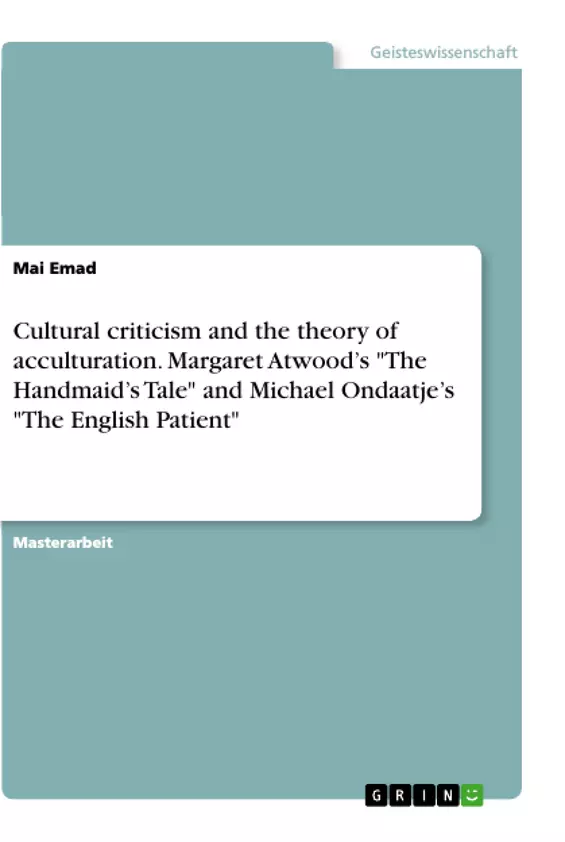This study is about John Berry’s Theory of Acculturation whose main concepts are separation, marginalization, assimilation, and integration. It examines how the theory of Acculturation can be applied to the two Canadian novels under study: Margaret Atwood’s "The Handmaid’s Tale" and Michael Ondaatje’s "The English patient."
It is divided into three chapters with an introduction and a conclusion. The introduction includes the following: objective of study, questions of study, methodology of study, literature review, and chapterizations.
The questions of that study are: What is the Theory of Acculturation?; what are the four strategies of this theory and how they are developed?; why is today’s world in dire need of cultural diversity?; and how are these four strategies applied to the two novels?
Inhaltsverzeichnis
- Introduction
- Chapter One: John Berry's Theory of Acculturation: Definitions and Strategies
- Chapter Two: Separation and Marginalization in Atwood's The Handmaid's Tale and Michael Ondaatje's The English Patient
- Chapter Three: Assimilation vs. Integration in The Handmaid's Tale and The English Patient
- Conclusion
Zielsetzung und Themenschwerpunkte
Diese Studie konzentriert sich auf John Berrys Theorie der Akkulturation, deren Hauptkonzepte Trennung, Marginalisierung, Assimilation und Integration sind. Sie untersucht, wie die Akkulturationstheorie auf die beiden kanadischen Romane unter Betrachtung angewendet werden kann: Margaret Atwoods The Handmaid's Tale (1985) und Michael Ondaatjes The English Patient (1992). Dieses Thema ist neu, orientalisch und reich an verschiedenen sozialen Kontexten; es befasst sich auch mit kultureller Vielfalt zwischen Ländern und Menschen.
- Definition und Analyse der Akkulturationstheorie
- Anwendung der Akkulturationstheorie auf literarische Werke
- Untersuchung der Strategien der Akkulturation: Trennung, Marginalisierung, Assimilation und Integration
- Exploration der Bedeutung kultureller Vielfalt in der heutigen Welt
- Bewertung der Auswirkungen von Akkulturation auf die Identitätsbildung
Zusammenfassung der Kapitel
Das erste Kapitel behandelt die theoretischen Grundlagen von Berrys Akkulturationstheorie, einschließlich Definitionen und Strategien. Das zweite Kapitel befasst sich mit den Themen Trennung und Marginalisierung in den beiden Romanen, wobei die Analyse aufzeigt, wie die Werke diese kulturellen Konzepte widerspiegeln. Das dritte Kapitel untersucht die Strategien der Assimilation und Integration im Kontext der Romane, beleuchtet die Unterschiede zwischen diesen Ansätzen und analysiert deren Anwendung in den beiden literarischen Werken.
Schlüsselwörter
Die wichtigsten Schlüsselwörter und Themen dieser Studie sind Akkulturation, Integration, Assimilation, Trennung, Marginalisierung, kulturelle Vielfalt, Identität, kanadische Literatur, Margaret Atwood, Michael Ondaatje, The Handmaid's Tale, The English Patient.
- Citation du texte
- Mai Emad (Auteur), 2021, Cultural criticism and the theory of acculturation. Margaret Atwood’s "The Handmaid’s Tale" and Michael Ondaatje’s "The English Patient", Munich, GRIN Verlag, https://www.grin.com/document/1043596



